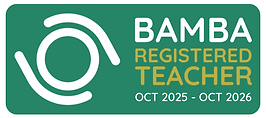Please see the 'Courses' and 'Events' pages for details of my current drop-in classes, retreats and courses, and how to book.
What is mindfulness?
Mindfulness is paying attention in a particular way; on purpose, in the present moment, and non-judgementally (a definition from John Kabat-Zinn, one of the founders of modern day mindfulness). It is a skill that we can learn, that allows us to be present for what’s going on in our daily lives, to notice and be more grateful for things, and to face our difficulties with kindness rather than run away from them. It can help us to be more focussed, to settle our minds, to calm the “inner critic” and to live in a more compassionate manner which can benefit not only ourselves but those around us.
Mindfulness can be of huge benefit to everyone, young or old, from all walks of life. It is not a religion and is taught in a secular (non-religious) way, so it is suitable for people of any faith or no faith. It is not the same as counselling or therapy, and you will not be asked to share any information about your day to day life, situation or history. And no, you do not have to sit crossed legged on a cushion – although you can if you wish!
What is the evidence for mindfulness?
MRI scans show that after an eight-week course of mindfulness practice, the brain’s “fight or flight” centre, celled the amygdala, appears to shrink. This primal region of the brain, associated with fear and emotion, is involved in the initiation of the body’s response to stress. As the amygdala shrinks, the pre-frontal cortex – associated with higher order brain functions such as awareness, concentration and decision-making – becomes thicker. The “functional connectivity” between these regions – i.e. how often they are activated together – also changes: the connection between the amygdala and the rest of the brain gets weaker, while the connections between areas associated with attention and concentration get stronger.
Mindfulness meditation has been suggested to lead to increased activity of the parasympathetic nervous system, preventing and downregulating the sympathetic nervous system “fight or flight” stress responses. It has also been shown to reduce levels of biomarkers of stress and inflammation, like C-reactive proteins, interleukin 6 and cortisol – all of which are associated with disease - and to ‘uncouple’ areas of the brain that assess the unpleasantness of pain (the anterior cingulate cortex) and parts of the prefrontal cortex.
Please see the 'Courses', 'Events' and '1to1' tabs for more details of how to begin your mindfulness journey.
"There's more right with you than wrong with you... as long as you're breathing" ~Rob Nairn













